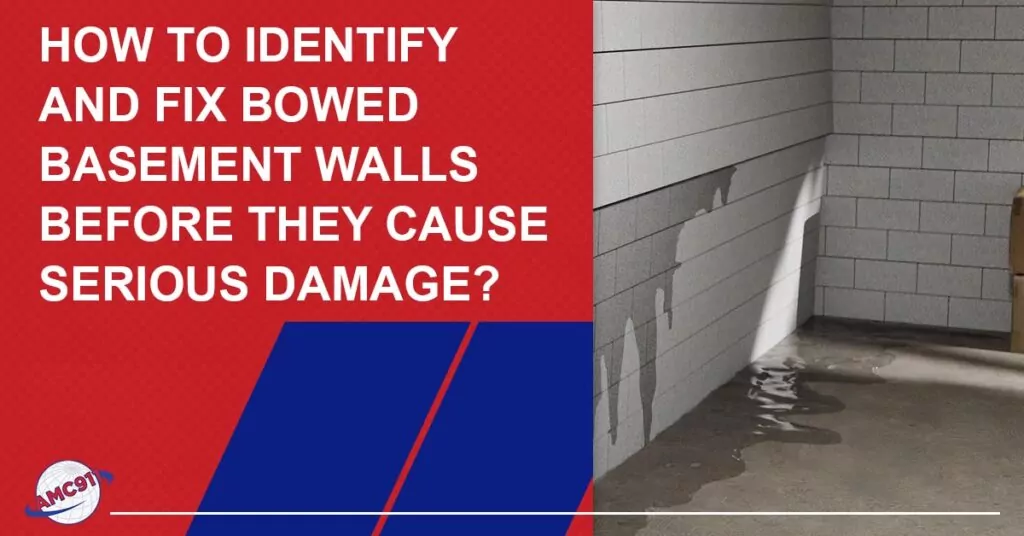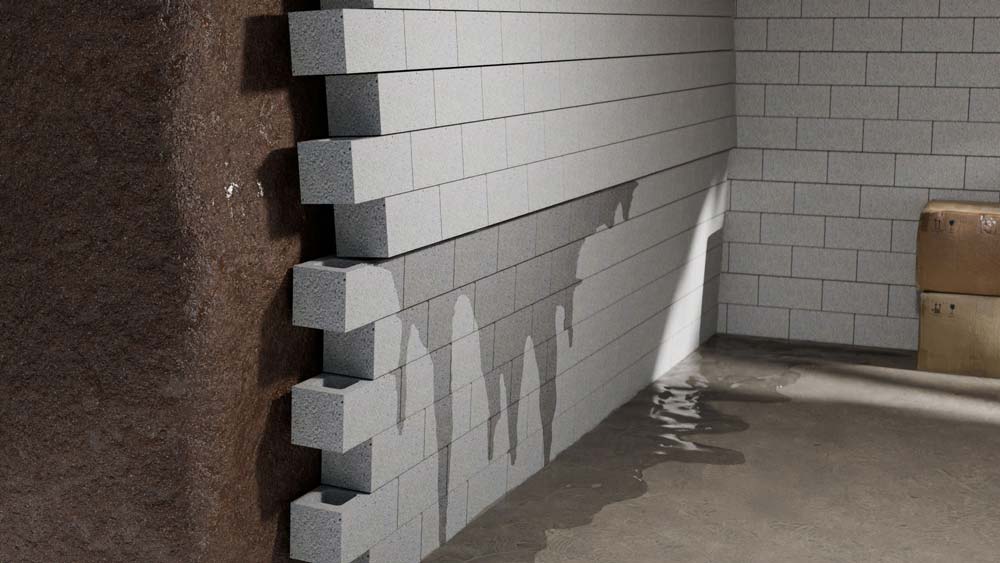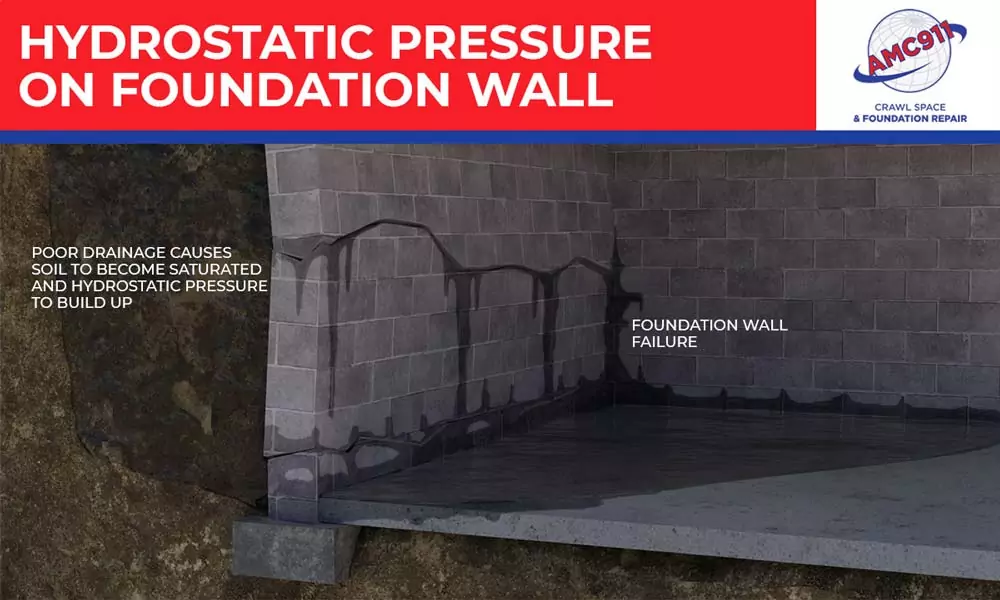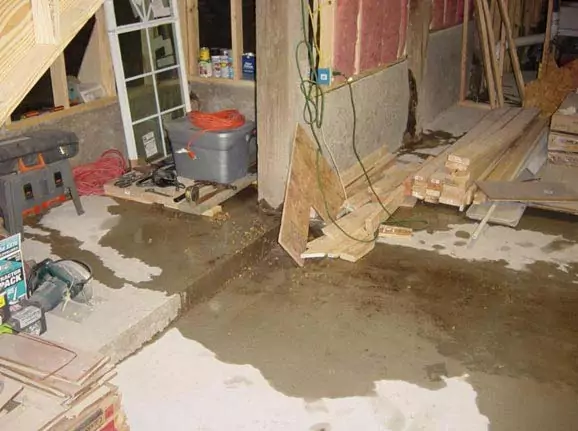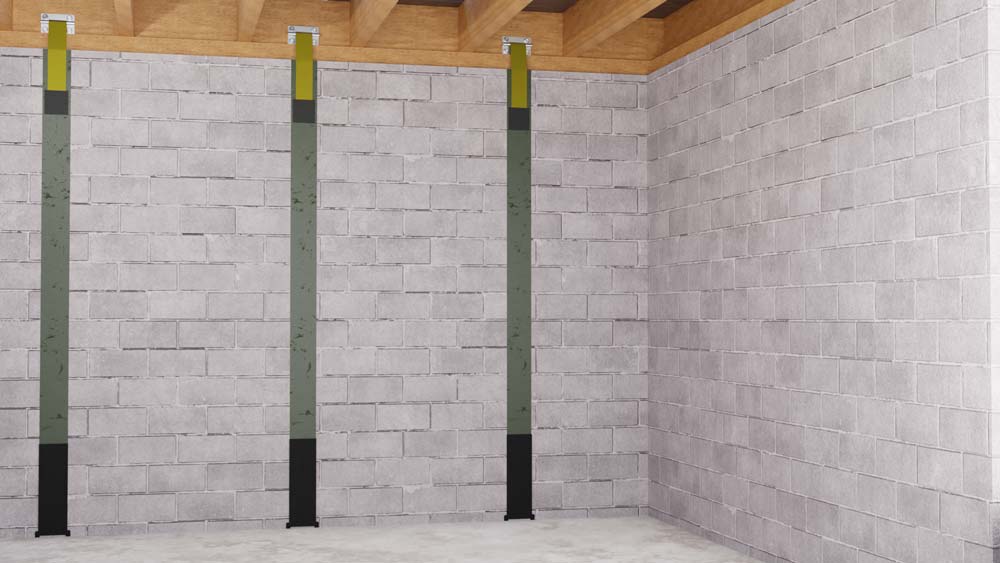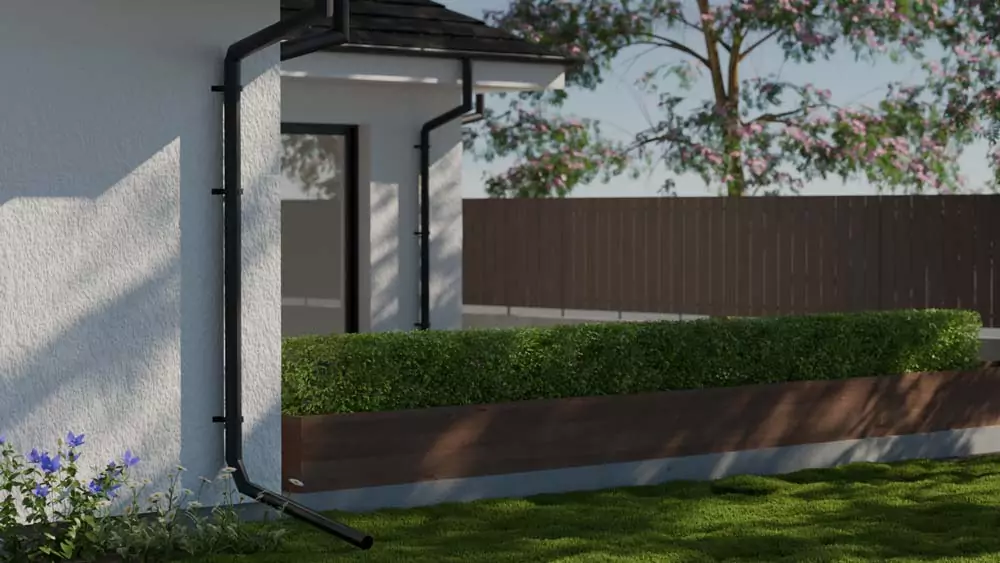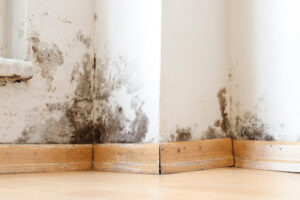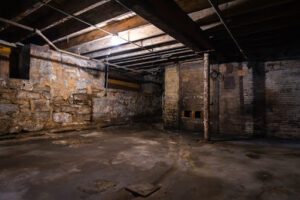Bowed basement walls are a serious issue for homeowners. While the problem may start as a small curve or tilt in the wall, it can result in significant structural problems if left unattended over time. The good news is that identifying bowed basement walls early can save you from costly foundation repairs and protect your home.
In this article, we’ll explore the signs that your basement walls are bowing, what causes this issue, and the best methods for repair and prevention.
Signs That Your Basement Walls Are Bowing
The stability of your basement walls is crucial to the overall structure of your home. Over time, these walls may start to bow due to various causes. Recognizing the early warning indicators can help you avoid costly foundation repairs and ensure your home remains safe.
Here’s a breakdown of both visible and hidden signs that may indicate your basement walls are bowing.
Visible Signs
- Horizontal Cracks: One of the most obvious indicators of bowing walls is horizontal cracking. These cracks typically appear in the middle of the wall, following the mortar joints in block walls or as continuous lines in poured concrete walls.
- Stair-Step Cracks: Another visible sign is stair-step cracks along the mortar joints of your brick or block wall. These cracks usually start in the corners and zigzag upward or downward, signaling potential wall bowing.
- Bulging or Leaning Walls: Any noticeable bulging or leaning of the walls is a clear sign of trouble. Looking down the length of the wall, you may see curves or inward tilting, both of which are red flags.
Hidden Signs
- Water Seepage and Mold: Bowing walls can create small gaps that allow water to enter, often leading to mold or mildew. While not a direct sign, water damage can indicate that your walls may be compromised.
- Shifting or Uneven Floors Above: Uneven or sagging floors above your basement can signal that the foundation has shifted due to bowing walls. This is an important structural issue that should be addressed promptly.
- Sticking Doors and Windows: If doors or windows throughout your home begin sticking or don’t close properly, it could be caused by foundation movement from bowing walls. While indirect, this is a crucial warning sign to monitor.
What Causes Basement Walls To Bow?
Bowing basement walls are a serious concern for homeowners as they can compromise your home’s structural integrity. Several factors contribute to this issue, including hydrostatic pressure, soil expansion and contraction, poor drainage, and substandard construction or materials.
Here’s a closer look at each of these causes:
Hydrostatic Pressure
Hydrostatic pressure occurs when water in the surrounding soil of your home builds up and exerts force against the foundation walls. This is one of the most common causes of bowing walls. When water accumulates around your foundation—especially after heavy rain or due to poor drainage—it pushes toward the basement walls. Over time, hydrostatic pressure can cause the walls to bow, crack, or collapse if left untreated.
Key Factors:
- Inadequate Drainage: Blocked or missing gutters and downspouts can lead to water accumulating near your foundation.
- Heavy Rainfall: Areas prone to heavy rain experience increased hydrostatic pressure on the walls.
- Leaky Plumbing: Water from broken or leaking pipes can also contribute to pressure buildup around the foundation.
Soil Expansion And Contraction
Soil movement plays a major role in wall stability. Certain soils, particularly clay, expand when they absorb moisture and contract as they dry out. This cycle of expansion and contraction creates shifting pressure on basement walls, leading to bowing and cracks.
Key Factors:
- Clay Soils: Highly expansive clay soils exert significant pressure when wet and shrink when dry.
- Seasonal Changes: Wetter months cause the soil to expand, while dry periods cause contraction, affecting wall stability.
- Frost Heave: In colder climates, soil freezing and thawing can cause movement, impacting the foundation.
Poor Drainage
Effective drainage solutions are critical to preventing bowing walls. When water is not properly diverted from your foundation, it accumulates and increases hydrostatic pressure. Poor drainage also intensifies the soil’s expansion and contraction cycles.
Key Factors:
- Improper Gutter Placement: Misaligned or faulty gutters and downspouts may direct water toward the foundation rather than away.
- Lack of Drainage Systems: The absence of systems like French drains or weep tiles can result in poor water management around the foundation.
- Grading Issues: Poor landscape grading allows water to pool around the foundation instead of flowing away.
Poor Construction Or Weak Materials
Structural deficiencies can make basement walls more susceptible to bowing. Poor construction techniques, low-quality materials, and failure to account for soil and water conditions during building can all contribute to weakened walls.
Key Factors:
- Substandard Materials: Using low-quality concrete or blocks can make weaker walls prone to bowing.
- Lack of Reinforcement: Walls without proper reinforcement may not withstand the external pressures from the surrounding soil.
- Ignoring Soil Conditions: Not accounting for soil type and moisture levels during construction can lead to unforeseen pressures on the foundation.
Addressing these issues promptly can prevent further damage and costly repairs. Regular inspections, proper drainage, and professional assessments are essential to maintaining the sturdiness and safety of your basement walls.
Repair Options For Bowed Basement Walls
Bowed basement walls are a common issue that can compromise the sturdiness of your home. Several basement wall repair methods are available to address this problem, each with advantages and specific use cases.
Below are some of the most effective methods:
- Carbon Fiber Straps: Carbon fiber straps are a modern solution for reinforcing bowed walls. This method involves adhering carbon fiber straps vertically along the bowed wall using strong epoxy or resin. The high tensile strength of carbon fiber prevents further movement and offers a minimally intrusive repair solution.
- Epoxy Crack Injection: Epoxy crack injection is another technique used to stabilize and restore the integrity of walls with minor bowing and cracking. The process involves injecting a high-strength epoxy resin into cracks, which then hardens and seals the cracks, preventing further water intrusion and wall movement.
- Helical Tiebacks: Helical tiebacks are used for more severe cases of wall bowing. These are large screws that are installed horizontally through the wall and into the surrounding soil. Once in place, the tiebacks are tightened to pull the wall back into its original position.
- Wall Anchors: Wall anchors are metal plates attached to the inside of the wall and connected to an anchor placed in the ground outside the home. The wall can be gradually pulled back into place by tightening the connection over time.
- I-Beams: I-Beams are another reinforcement option for bowed walls. Steel I-beams are placed vertically against the wall and secured to the floor and joists, providing additional support.
Prevention Tips To Avoid Future Bowing
Bowing foundation walls can be a serious issue for homeowners. Left untreated, bowing can compromise a house’s structural integrity, leading to costly repairs.
Here are some practical prevention tips to avoid future bowing:
- Improve Drainage: Proper drainage around your house is crucial to prevent water from collecting near your foundation. Water buildup can increase hydrostatic pressure against the foundation walls, leading to bowing and potential cracks.
- Maintain Gutters and Downspouts: One of the simplest yet most effective ways to protect your foundation is by maintaining your gutters and downspouts. These systems direct rainwater away from your home, minimizing the risk of water seeping into the foundation.
- Monitor Soil Conditions: The type and condition of the soil around your home can significantly impact foundation stability. Certain soils, such as expansive clay, can swell and shrink with moisture changes, exerting pressure on the foundation walls.
- Regular Foundation Inspections: Regular inspections of your foundation can help recognize potential issues before they turn into serious problems. Early detection is key to preventing future bowing and maintaining your home’s structural integrity.
- Basement Waterproofing: Foundation waterproofing is an effective long-term solution to prevent water intrusion and minimize the risk of bowing walls. A dry basement helps maintain the foundation’s integrity by reducing hydrostatic pressure.
Identifying and fixing bowed basement walls early is crucial to maintaining your home’s structural soundness and preventing further damage. You can promptly address these issues by staying vigilant for warning signs such as horizontal cracks, wall tilting, and water leakage.
When it comes to reliable, expert foundation repair, you can trust us at AMC911. With over 30 years of experience and a team of in-house engineers, we offer comprehensive solutions to reinforce your foundation effectively. Don’t wait until the problem worsens—contact us for a free inspection and ensure peace of mind today.

